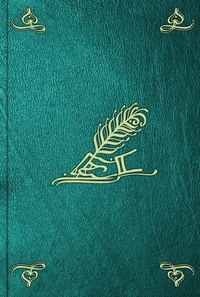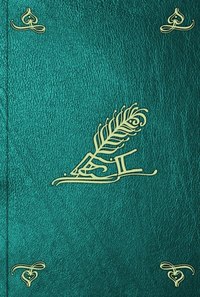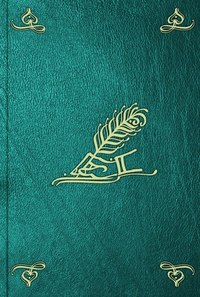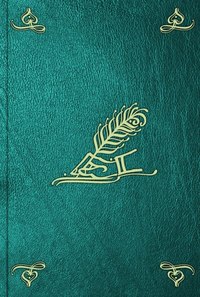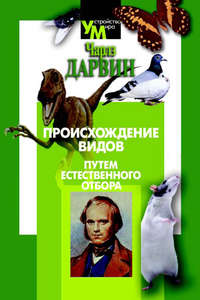 полная версия
полная версияThe Origin of Species by Means of Natural Selection
ABERRANT. – Forms or groups of animals or plants which deviate in important characters from their nearest allies, so as not to be easily included in the same group with them, are said to be aberrant.
ABERRATION (in Optics). – In the refraction of light by a convex lens the rays passing through different parts of the lens are brought to a focus at slightly different distances – this is called SPHERICAL ABERRATION; at the same time the coloured rays are separated by the prismatic action of the lens and likewise brought to a focus at different distances – this is CHROMATIC ABERRATION.
ABNORMAL. – Contrary to the general rule.
ABORTED. – An organ is said to be aborted, when its development has been arrested at a very early stage.
ALBINISM. – Albinos are animals in which the usual colouring matters characteristic of the species have not been produced in the skin and its appendages. Albinism is the state of being an albino.
ALGAE. – A class of plants including the ordinary sea-weeds and the filamentous fresh-water weeds.
ALTERNATION OF GENERATIONS. – This term is applied to a peculiar mode of reproduction which prevails among many of the lower animals, in which the egg produces a living form quite different from its parent, but from which the parent-form is reproduced by a process of budding, or by the division of the substance of the first product of the egg.
AMMONITES. – A group of fossil, spiral, chambered shells, allied to the existing pearly Nautilus, but having the partitions between the chambers waved in complicated patterns at their junction with the outer wall of the shell.
ANALOGY. – That resemblance of structures which depends upon similarity of function, as in the wings of insects and birds. Such structures are said to be ANALOGOUS, and to be ANALOGUES of each other.
ANIMALCULE. – A minute animal: generally applied to those visible only by the microscope.
ANNELIDS. – A class of worms in which the surface of the body exhibits a more or less distinct division into rings or segments, generally provided with appendages for locomotion and with gills. It includes the ordinary marine worms, the earth-worms, and the leeches.
ANTENNAE. – Jointed organs appended to the head in Insects, Crustacea and Centipedes, and not belonging to the mouth.
ANTHERS. – The summits of the stamens of flowers, in which the pollen or fertilising dust is produced.
APLACENTALIA, APLACENTATA or APLACENTAL MAMMALS. – See MAMMALIA.
ARCHETYPAL. – Of or belonging to the Archetype, or ideal primitive form upon which all the beings of a group seem to be organised.
ARTICULATA. – A great division of the Animal Kingdom characterised generally by having the surface of the body divided into rings called segments, a greater or less number of which are furnished with jointed legs (such as Insects, Crustaceans and Centipedes).
ASYMMETRICAL. – Having the two sides unlike.
ATROPHIED. – Arrested in development at a very early stage.
BALANUS. – The genus including the common Acorn-shells which live in abundance on the rocks of the sea-coast.
BATRACHIANS. – A class of animals allied to the Reptiles, but undergoing a peculiar metamorphosis, in which the young animal is generally aquatic and breathes by gills. (Examples, Frogs, Toads, and Newts.)
BOULDERS. – Large transported blocks of stone generally embedded in clays or gravels.
BRACHIOPODA. – A class of marine Mollusca, or soft-bodied animals, furnished with a bivalve shell, attached to submarine objects by a stalk which passes through an aperture in one of the valves, and furnished with fringed arms, by the action of which food is carried to the mouth.
BRANCHIAE. – Gills or organs for respiration in water.
BRANCHIAL. – Pertaining to gills or branchiae.
CAMBRIAN SYSTEM. – A series of very ancient Palaeozoic rocks, between the Laurentian and the Silurian. Until recently these were regarded as the oldest fossiliferous rocks.
CANIDAE. – The Dog-family, including the Dog, Wolf, Fox, Jackal, etc.
CARAPACE. – The shell enveloping the anterior part of the body in Crustaceans generally; applied also to the hard shelly pieces of the Cirripedes.
CARBONIFEROUS. – This term is applied to the great formation which includes, among other rocks, the coal-measures. It belongs to the oldest, or Palaeozoic, system of formations.
CAUDAL. – Of or belonging to the tail.
CEPHALOPODS. – The highest class of the Mollusca, or soft-bodied animals, characterised by having the mouth surrounded by a greater or less number of fleshy arms or tentacles, which, in most living species, are furnished with sucking-cups. (Examples, Cuttle-fish, Nautilus.)
CETACEA. – An order of Mammalia, including the Whales, Dolphins, etc., having the form of the body fish-like, the skin naked, and only the fore limbs developed.
CHELONIA. – An order of Reptiles including the Turtles, Tortoises, etc.
CIRRIPEDES. – An order of Crustaceans including the Barnacles and Acorn-shells. Their young resemble those of many other Crustaceans in form; but when mature they are always attached to other objects, either directly or by means of a stalk, and their bodies are enclosed by a calcareous shell composed of several pieces, two of which can open to give issue to a bunch of curled, jointed tentacles, which represent the limbs.
COCCUS. – The genus of Insects including the Cochineal. In these the male is a minute, winged fly, and the female generally a motionless, berry-like mass.
COCOON. – A case usually of silky material, in which insects are frequently enveloped during the second or resting-stage (pupa) of their existence. The term "cocoon-stage" is here used as equivalent to "pupa-stage."
COELOSPERMOUS. – A term applied to those fruits of the Umbelliferae which have the seed hollowed on the inner face.
COLEOPTERA. – Beetles, an order of Insects, having a biting mouth and the first pair of wings more or less horny, forming sheaths for the second pair, and usually meeting in a straight line down the middle of the back.
COLUMN. – A peculiar organ in the flowers of Orchids, in which the stamens, style and stigma (or the reproductive parts) are united.
COMPOSITAE or COMPOSITOUS PLANTS. – Plants in which the inflorescence consists of numerous small flowers (florets) brought together into a dense head, the base of which is enclosed by a common envelope. (Examples, the Daisy, Dandelion, etc.)
CONFERVAE. – The filamentous weeds of fresh water.
CONGLOMERATE. – A rock made up of fragments of rock or pebbles, cemented together by some other material.
COROLLA. – The second envelope of a flower usually composed of coloured, leaf-like organs (petals), which may be united by their edges either in the basal part or throughout.
CORRELATION. – The normal coincidence of one phenomenon, character, etc., with another.
CORYMB. – A bunch of flowers in which those springing from the lower part of the flower stalks are supported on long stalks so as to be nearly on a level with the upper ones.
COTYLEDONS. – The first or seed-leaves of plants.
CRUSTACEANS. – A class of articulated animals, having the skin of the body generally more or less hardened by the deposition of calcareous matter, breathing by means of gills. (Examples, Crab, Lobster, Shrimp, etc.)
CURCULIO. – The old generic term for the Beetles known as Weevils, characterised by their four-jointed feet, and by the head being produced into a sort of beak, upon the sides of which the antennae are inserted.
CUTANEOUS. – Of or belonging to the skin.
DEGRADATION. – The wearing down of land by the action of the sea or of meteoric agencies.
DENUDATION. – The wearing away of the surface of the land by water.
DEVONIAN SYSTEM or FORMATION. – A series of Palaeozoic rocks, including the Old Red Sandstone.
DICOTYLEDONS, or DICOTYLEDONOUS PLANTS. – A class of plants characterised by having two seed-leaves, by the formation of new wood between the bark and the old wood (exogenous growth) and by the reticulation of the veins of the leaves. The parts of the flowers are generally in multiples of five.
DIFFERENTATION. – The separation or discrimination of parts or organs which in simpler forms of life are more or less united.
DIMORPHIC. – Having two distinct forms. – DIMORPHISM is the condition of the appearance of the same species under two dissimilar forms.
DIOECIOUS. – Having the organs of the sexes upon distinct individuals.
DIORITE. – A peculiar form of Greenstone.
DORSAL. – Of or belonging to the back.
EDENTATA. – A peculiar order of Quadrupeds, characterised by the absence of at least the middle incisor (front) teeth in both jaws. (Examples, the Sloths and Armadillos.)
ELYTRA. – The hardened fore-wings of Beetles, serving as sheaths for the membranous hind-wings, which constitute the true organs of flight.
EMBRYO. – The young animal undergoing development within the egg or womb.
EMBRYOLOGY. – The study of the development of the embryo.
ENDEMIC. – Peculiar to a given locality.
ENTOMOSTRACA. – A division of the class Crustacea, having all the segments of the body usually distinct, gills attached to the feet or organs of the mouth, and the feet fringed with fine hairs. They are generally of small size.
EOCENE. – The earliest of the three divisions of the Tertiary epoch of geologists. Rocks of this age contain a small proportion of shells identical with species now living.
EPHEMEROUS INSECTS. – Insects allied to the May-fly.
FAUNA. – The totality of the animals naturally inhabiting a certain country or region, or which have lived during a given geological period.
FELIDAE. – The Cat-family.
FERAL. – Having become wild from a state of cultivation or domestication.
FLORA. – The totality of the plants growing naturally in a country, or during a given geological period.
FLORETS. – Flowers imperfectly developed in some respects, and collected into a dense spike or head, as in the Grasses, the Dandelion, etc.
FOETAL. – Of or belonging to the foetus, or embryo in course of development.
FORAMINIFERA. – A class of animals of very low organisation and generally of small size, having a jelly-like body, from the surface of which delicate filaments can be given off and retracted for the prehension of external objects, and having a calcareous or sandy shell, usually divided into chambers and perforated with small apertures.
FOSSILIFEROUS. – Containing fossils.
FOSSORIAL. – Having a faculty of digging. The Fossorial Hymenoptera are a group of Wasp-like Insects, which burrow in sandy soil to make nests for their young.
FRENUM (pl. FRENA). – A small band or fold of skin.
FUNGI (sing. FUNGUS). – A class of cellular plants, of which Mushrooms, Toadstools, and Moulds, are familiar examples.
FURCULA. – The forked bone formed by the union of the collar-bones in many birds, such as the common Fowl.
GALLINACEOUS BIRDS. – An order of birds of which the common Fowl, Turkey, and Pheasant, are well-known examples.
GALLUS. – The genus of birds which includes the common Fowl.
GANGLION. – A swelling or knot from which nerves are given off as from a centre.
GANOID FISHES. – Fishes covered with peculiar enamelled bony scales. Most of them are extinct.
GERMINAL VESICLE. – A minute vesicle in the eggs of animals, from which the development of the embryo proceeds.
GLACIAL PERIOD. – A period of great cold and of enormous extension of ice upon the surface of the earth. It is believed that glacial periods have occurred repeatedly during the geological history of the earth, but the term is generally applied to the close of the Tertiary epoch, when nearly the whole of Europe was subjected to an arctic climate.
GLAND. – An organ which secretes or separates some peculiar product from the blood or sap of animals or plants.
GLOTTIS. – The opening of the windpipe into the oesophagus or gullet.
GNEISS. – A rock approaching granite in composition, but more or less laminated, and really produced by the alteration of a sedimentary deposit after its consolidation.
GRALLATORES. – The so-called wading-birds (storks, cranes, snipes, etc.), which are generally furnished with long legs, bare of feathers above the heel, and have no membranes between the toes.
GRANITE. – A rock consisting essentially of crystals of felspar and mica in a mass of quartz.
HABITAT. – The locality in which a plant or animal naturally lives.
HEMIPTERA. – An order or sub-order of insects, characterised by the possession of a jointed beak or rostrum, and by having the fore-wings horny in the basal portion and membranous at the extremity, where they cross each other. This group includes the various species of bugs.
HERMAPHRODITE. – Possessing the organs of both sexes.
HOMOLOGY. – That relation between parts which results from their development from corresponding embryonic parts, either in different animals, as in the case of the arm of man, the fore-leg of a quadruped, and the wing of a bird; or in the same individual, as in the case of the fore and hind legs in quadrupeds, and the segments or rings and their appendages of which the body of a worm, a centipede, etc., is composed. The latter is called serial homology. The parts which stand in such a relation to each other are said to be homologous, and one such part or organ is called the homologue of the other. In different plants the parts of the flower are homologous, and in general these parts are regarded as homologous with leaves.
HOMOPTERA. – An order or sub-order of insects having (like the Hemiptera) a jointed beak, but in which the fore-wings are either wholly membranous or wholly leathery, The Cicadae, frog-hoppers, and Aphides, are well-known examples.
HYBRID. – The offspring of the union of two distinct species.
HYMENOPTERA. – An order of insects possessing biting jaws and usually four membranous wings in which there are a few veins. Bees and wasps are familiar examples of this group.
HYPERTROPHIED. – Excessively developed.
ICHNEUMONIDAE. – A family of hymenopterous insects, the members of which lay their eggs in the bodies or eggs of other insects.
IMAGO. – The perfect (generally winged) reproductive state of an insect.
INDIGENES. – The aboriginal animal or vegetable inhabitants of a country or region.
INFLORESCENCE. – The mode of arrangement of the flowers of plants.
INFUSORIA. – A class of microscopic animalcules, so called from their having originally been observed in infusions of vegetable matters. They consist of a gelatinous material enclosed in a delicate membrane, the whole or part of which is furnished with short vibrating hairs (called cilia), by means of which the animalcules swim through the water or convey the minute particles of their food to the orifice of the mouth.
INSECTIVOROUS. – Feeding on insects.
INVERTEBRATA, or INVERTEBRATE ANIMALS. – Those animals which do not possess a backbone or spinal column.
LACUNAE. – Spaces left among the tissues in some of the lower animals and serving in place of vessels for the circulation of the fluids of the body.
LAMELLATED. – Furnished with lamellae or little plates.
LARVA (pl. LARVAE). – The first condition of an insect at its issuing from the egg, when it is usually in the form of a grub, caterpillar, or maggot.
LARYNX. – The upper part of the windpipe opening into the gullet.
LAURENTIAN. – A group of greatly altered and very ancient rocks, which is greatly developed along the course of the St. Laurence, whence the name. It is in these that the earliest known traces of organic bodies have been found.
LEGUMINOSAE. – An order of plants represented by the common peas and beans, having an irregular flower in which one petal stands up like a wing, and the stamens and pistil are enclosed in a sheath formed by two other petals. The fruit is a pod (or legume).
LEMURIDAE. – A group of four-handed animals, distinct from the monkeys and approaching the insectivorous quadrupeds in some of their characters and habits. Its members have the nostrils curved or twisted, and a claw instead of a nail upon the first finger of the hind hands.
LEPIDOPTERA. – An order of insects, characterised by the possession of a spiral proboscis, and of four large more or less scaly wings. It includes the well-known butterflies and moths.
LITTORAL. – Inhabiting the seashore.
LOESS. – A marly deposit of recent (Post-Tertiary) date, which occupies a great part of the valley of the Rhine.
MALACOSTRACA. – The higher division of the Crustacea, including the ordinary crabs, lobsters, shrimps, etc., together with the woodlice and sand-hoppers.
MAMMALIA. – The highest class of animals, including the ordinary hairy quadrupeds, the whales and man, and characterised by the production of living young which are nourished after birth by milk from the teats (MAMMAE, MAMMARY GLANDS) of the mother. A striking difference in embryonic development has led to the division of this class into two great groups; in one of these, when the embryo has attained a certain stage, a vascular connection, called the PLACENTA, is formed between the embryo and the mother; in the other this is wanting, and the young are produced in a very incomplete state. The former, including the greater part of the class, are called PLACENTAL MAMMALS; the latter, or APLACENTAL MAMMALS, include the Marsupials and Monotremes (ORNITHORHYNCHUS).
MAMMIFEROUS. – Having mammae or teats (see MAMMALIA).
MANDIBLES. – in insects, the first or uppermost pair of jaws, which are generally solid, horny, biting organs. In birds the term is applied to both jaws with their horny coverings. In quadrupeds the mandible is properly the lower jaw.
MARSUPIALS. – An order of Mammalia in which the young are born in a very incomplete state of development, and carried by the mother, while sucking, in a ventral pouch (marsupium), such as the kangaroos, opossums, etc. (see MAMMALIA).
MAXILLAE. – in insects, the second or lower pair of jaws, which are composed of several joints and furnished with peculiar jointed appendages called palpi, or feelers.
MELANISM. – The opposite of albinism; an undue development of colouring material in the skin and its appendages.
METAMORPHIC ROCKS. – Sedimentary rocks which have undergone alteration, generally by the action of heat, subsequently to their deposition and consolidation.
MOLLUSCA. – One of the great divisions of the animal kingdom, including those animals which have a soft body, usually furnished with a shell, and in which the nervous ganglia, or centres, present no definite general arrangement. They are generally known under the denomination of "shellfish"; the cuttle-fish, and the common snails, whelks, oysters, mussels, and cockles, may serve as examples of them.
MONOCOTYLEDONS, or MONOCOTYLEDONOUS PLANTS. – Plants in which the seed sends up only a single seed-leaf (or cotyledon); characterised by the absence of consecutive layers of wood in the stem (endogenous growth), by the veins of the leaves being generally straight, and by the parts of the flowers being generally in multiples of three. (Examples, grasses, lilies, orchids, palms, etc.)
MORAINES. – The accumulations of fragments of rock brought down by glaciers.
MORPHOLOGY. – The law of form or structure independent of function.
MYSIS-STAGE. – A stage in the development of certain crustaceans (prawns), in which they closely resemble the adults of a genus (Mysis) belonging to a slightly lower group.
NASCENT. – Commencing development.
NATATORY. – Adapted for the purpose of swimming.
NAUPLIUS-FORM. – The earliest stage in the development of many Crustacea, especially belonging to the lower groups. In this stage the animal has a short body, with indistinct indications of a division into segments, and three pairs of fringed limbs. This form of the common fresh-water CYCLOPS was described as a distinct genus under the name of NAUPLIUS.
NEURATION. – The arrangement of the veins or nervures in the wings of insects.
NEUTERS. – Imperfectly developed females of certain social insects (such as ants and bees), which perform all the labours of the community. Hence, they are also called WORKERS.
NICTITATING MEMBRANE. – A semi-transparent membrane, which can be drawn across the eye in birds and reptiles, either to moderate the effects of a strong light or to sweep particles of dust, etc., from the surface of the eye.
OCELLI. – The simple eyes or stemmata of insects, usually situated on the crown of the head between the great compound eyes.
OESOPHAGUS. – The gullet.
OOLITIC. – A great series of secondary rocks, so called from the texture of some of its members, which appear to be made up of a mass of small EGG-LIKE calcareous bodies.
OPERCULUM. – A calcareous plate employed by many Molluscae to close the aperture of their shell. The OPERCULAR VALVES of Cirripedes are those which close the aperture of the shell.
ORBIT. – The bony cavity for the reception of the eye.
ORGANISM. – An organised being, whether plant or animal.
ORTHOSPERMOUS. – A term applied to those fruits of the Umbelliferae which have the seed straight.
OSCULANT. – Forms or groups apparently intermediate between and connecting other groups are said to be osculant.
OVA. – Eggs.
OVARIUM or OVARY (in plants). – The lower part of the pistil or female organ of the flower, containing the ovules or incipient seeds; by growth after the other organs of the flower have fallen, it usually becomes converted into the fruit.
OVIGEROUS. – Egg-bearing.
OVULES (of plants). – The seeds in the earliest condition.
PACHYDERMS. – A group of Mammalia, so called from their thick skins, and including the elephant, rhinoceros, hippopotamus, etc.
PALAEOZOIC. – The oldest system of fossiliferous rocks.
PALPI. – Jointed appendages to some of the organs of the mouth in insects and Crustacea.
PAPILIONACEAE. – An order of plants (see LEGUMINOSAE), The flowers of these plants are called PAPILIONACEOUS, or butterfly-like, from the fancied resemblance of the expanded superior petals to the wings of a butterfly.
PARASITE. – An animal or plant living upon or in, and at the expense of, another organism.
PARTHENOGENESIS. – The production of living organisms from unimpregnated eggs or seeds.
PEDUNCULATED. – Supported upon a stem or stalk. The pedunculated oak has its acorns borne upon a footstool.
PELORIA or PELORISM. – The appearance of regularity of structure in the flowers of plants which normally bear irregular flowers.
PELVIS. – The bony arch to which the hind limbs of vertebrate animals are articulated.
PETALS. – The leaves of the corolla, or second circle of organs in a flower. They are usually of delicate texture and brightly coloured.
PHYLLODINEOUS. – Having flattened, leaf-like twigs or leafstalks instead of true leaves.
PIGMENT. – The colouring material produced generally in the superficial parts of animals. The cells secreting it are called PIGMENT-CELLS.
PINNATE. – Bearing leaflets on each side of a central stalk.
PISTILS. – The female organs of a flower, which occupy a position in the centre of the other floral organs. The pistil is generally divisible into the ovary or germen, the style and the stigma.
PLACENTALIA, PLACENTATA. – or PLACENTAL MAMMALS, See MAMMALIA.
PLANTIGRADES. – Quadrupeds which walk upon the whole sole of the foot, like the bears.
PLASTIC. – Readily capable of change.
PLEISTOCENE PERIOD. – The latest portion of the Tertiary epoch.
PLUMULE (in plants). – The minute bud between the seed-leaves of newly-germinated plants.
PLUTONIC ROCKS. – Rocks supposed to have been produced by igneous action in the depths of the earth.
POLLEN. – The male element in flowering plants; usually a fine dust produced by the anthers, which, by contact with the stigma effects the fecundation of the seeds. This impregnation is brought about by means of tubes (POLLEN-TUBES) which issue from the pollen-grains adhering to the stigma, and penetrate through the tissues until they reach the ovary.
POLYANDROUS (flowers). – Flowers having many stamens.
POLYGAMOUS PLANTS. – Plants in which some flowers are unisexual and others hermaphrodite. The unisexual (male and female) flowers, may be on the same or on different plants.
POLYMORPHIC. – Presenting many forms.




